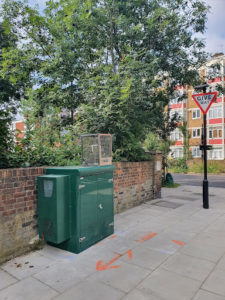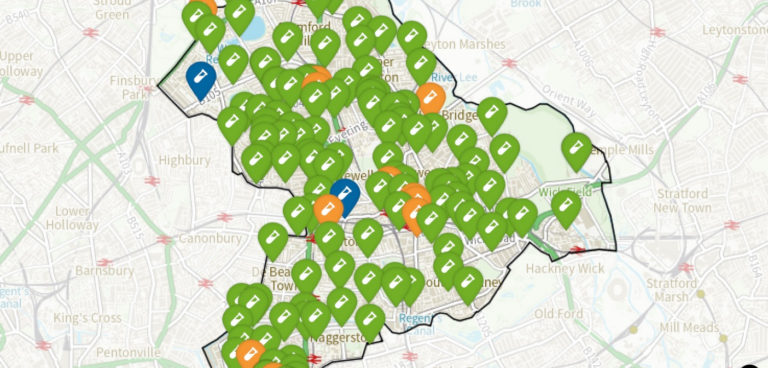A new online air quality map has been launched by Hackney Council as part of its plans to rebuild a greener borough in the aftermath of the pandemic.
The map shows levels of nitrogen dioxide (NO2) pollution at 140 sites across the London borough.
It uses data from a network of fixed diffusion tube monitors that take an average of NO2 pollution over the calendar year.
Locations with NO2 pollution levels that meet short- and long-term air quality objectives are shown in green. Orange shows locations that fail to meet the long-term objective but are expected to meet the short-term objective.

For the short-term annual objective for NO2 to be met, concentrations must not exceed 200 μg m3 more than 18 times a year. For the long-term annual objective to be met, the annual mean concentration at a location must not be more than 40 μg m3.
Data from the borough’s monitoring network shows that there was a reduction in air pollutant concentrations at almost all locations in 2020, with NO2 readings below air quality objectives at almost all sites in the borough.
Cllr Mete Coban, cabinet member for energy, waste, transport and public realm, Hackney Council, said: “We mustn’t ignore the bigger picture: London’s toxic air is caused predominantly by road traffic – which was higher in 2019 than it was 10 years before – and wood and coal burning.
“That’s why it’s imperative that we continue to encourage people to walk, cycle and take public transport over driving and rebuild a greener Hackney for all our residents.
Four new automatic air quality monitoring stations, which show levels of pollution in real time, are also set to be displayed through the council’s air quality web pages. These are in addition to the existing monitoring station located in Old Street and will be in place for the next two years.
The automatic monitors will help to monitor trends in NO2 and particulate matter pollution in real-time, so the council can check that reductions in NO2 concentrations in 2020 are being replicated.





